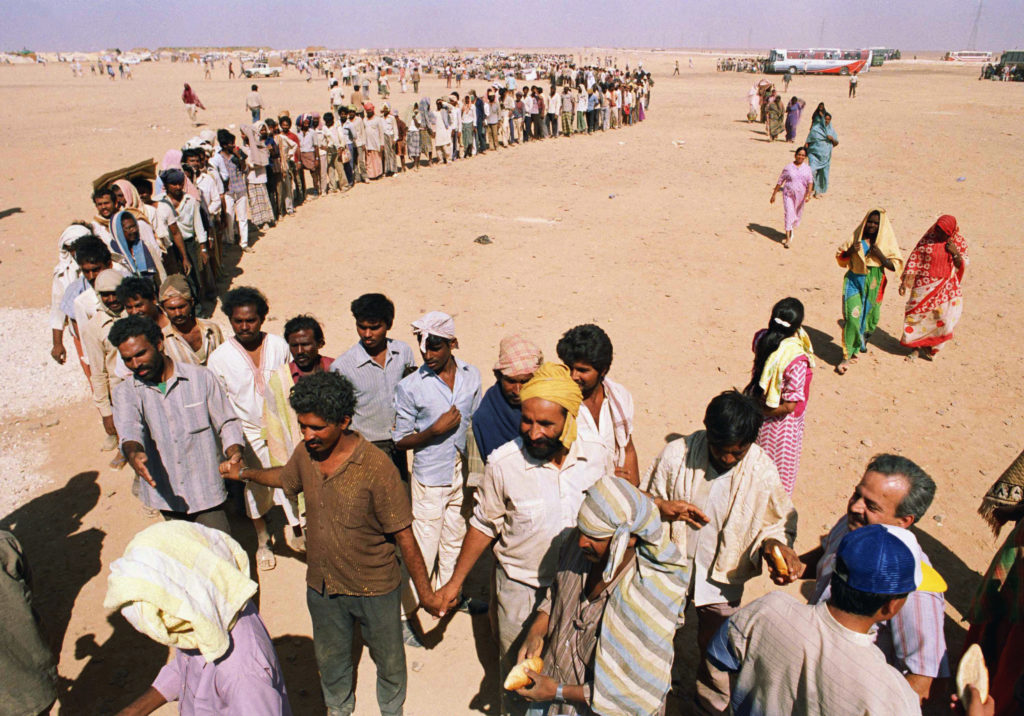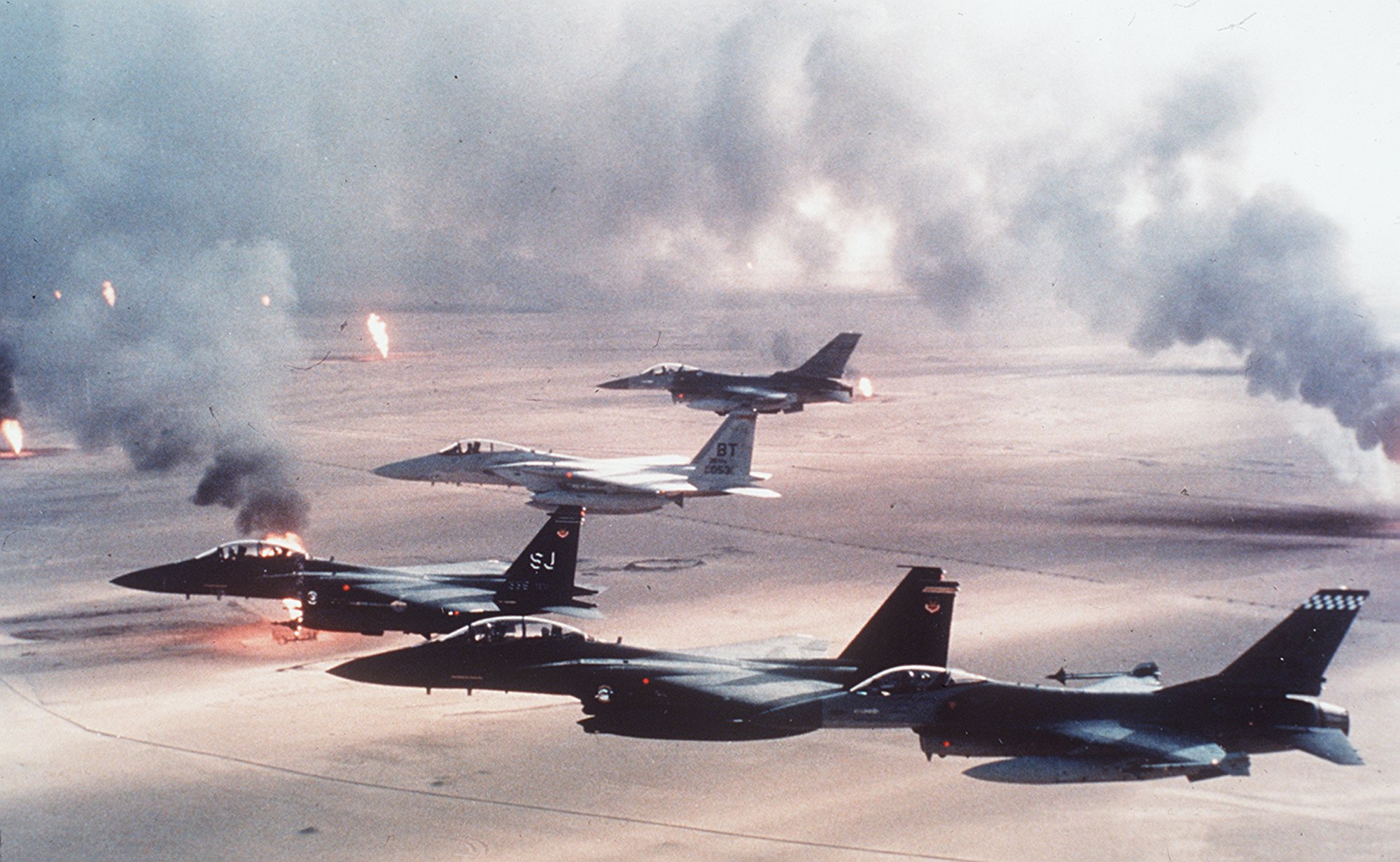Kuwait, 1990 — Four divisions of the Iraqi Republican Guard and Iraqi Army SF units flood into Kuwait. Airports are seized, fighters are screaming overhead, and Kuwait forces are quickly overwhelmed. Kuwait aircraft are shot from the sky, and almost their entire Navy is sunk. Some Kuwaiti forces have more success than others in delaying operations, trying to push the incoming Iraqi military away, but to no avail. By the end of the day, the entire country has fallen, and only a few resistance and armed militia movements are left.
On this day in history, August 2, 1990, Iraq invades Kuwait.
Iraq had claimed that Kuwait was “an integral part” of Iraq, and claimed it as its own. They even said that Iraq controlling Kuwait would be in their own best interests. However, most western nations didn’t see it that way — long story short, Iraq had just conveniently gained substantial access to almost a quarter of the world’s oil reserves in a single day. This is a simplification of a complex geopolitical situation, but suffice to say the event was quickly condemned by the international community.
Once Iraq controlled Kuwait, Saddam Hussein instated Prime Minister Alaa Hussein Ali into power, giving him purview over what was renamed the “Provisional Government of Free Kuwait.”

The United Nations condemned these actions, and they demanded that Iraq remove their military forces from the nation, but Hussein would not listen. Almost every major country in the world — even Iraq’s close western allies — were condemning the invasion and putting strict sanctions on Iraq, but nothing came of it. This even includes the then-Soviet Union and China. Eventually, the United States said that if Hussein did not pull troops out of Kuwait by 15 January of 1991, then they would have to face the wrath of the U.S. military.
Meanwhile, Hussein was beginning to make verbal threats to Saudi Arabia as well. Tensions continued to escalate.
Finally, the deadline rolled around, and the U.S. made good on their threats for war, alongside their many allies. They began by bombing runs on Jan. 16, 1991, which stretched for 42 days. From there, U.S. forces began to escalate, with skirmishes and massive air campaigns happening all the way up until late February, when the U.S.-led coalition began their land campaign out of Saudi Arabia against Iraqi controlled territory (however, many SOF units had already been operational behind enemy lines). Iraqi forces were now suffering a similar fate they had just subjected to Kuwait — their military was quickly overwhelmed, though some historic battles did occur.
In a few days, the Iraqi military buckled, the U.S.-led coalition had established a strong presence in Iraq and had freed Kuwait from Iraqi control. A cease-fire formally ended the conflict.
As many Iraqi forces were retreating, they set fire to the oil fields which is where you get some of the most iconic pictures of the war.
The countries who put boots on the ground, aside from the United States (who made up 73% of the coalition troops) were as follows: Argentina, Australia, Bahrain, Bangladesh, Belgium, Canada, Denmark, Egypt, France, Greece, Italy, Kuwait, Morocco, Netherlands, New Zealand, Niger, Norway, Oman, Pakistan, Poland, Portugal, Qatar, South Korea, Saudi Arabia, Senegal, Sierra Leone, Singapore, Spain, Syria, the United Arab Emirates, and the United Kingdom.
To this day, U.S. forces remain stationed in Kuwait.

Featured image: An aerial view of Kuwait oil fires set by retreating Iraqi troops in the last days of the Persian Gulf War (late 1990 to early 1991). The resulting inferno emitted large amounts of carbon dioxide and other gases into the atmosphere, while locally the thick smoke blocked sunlight, lowered temperatures, and engulfed the area in a mist of microscopic oil droplets. | National Science Foundation photo by Robert Bumpas










COMMENTS
You must become a subscriber or login to view or post comments on this article.